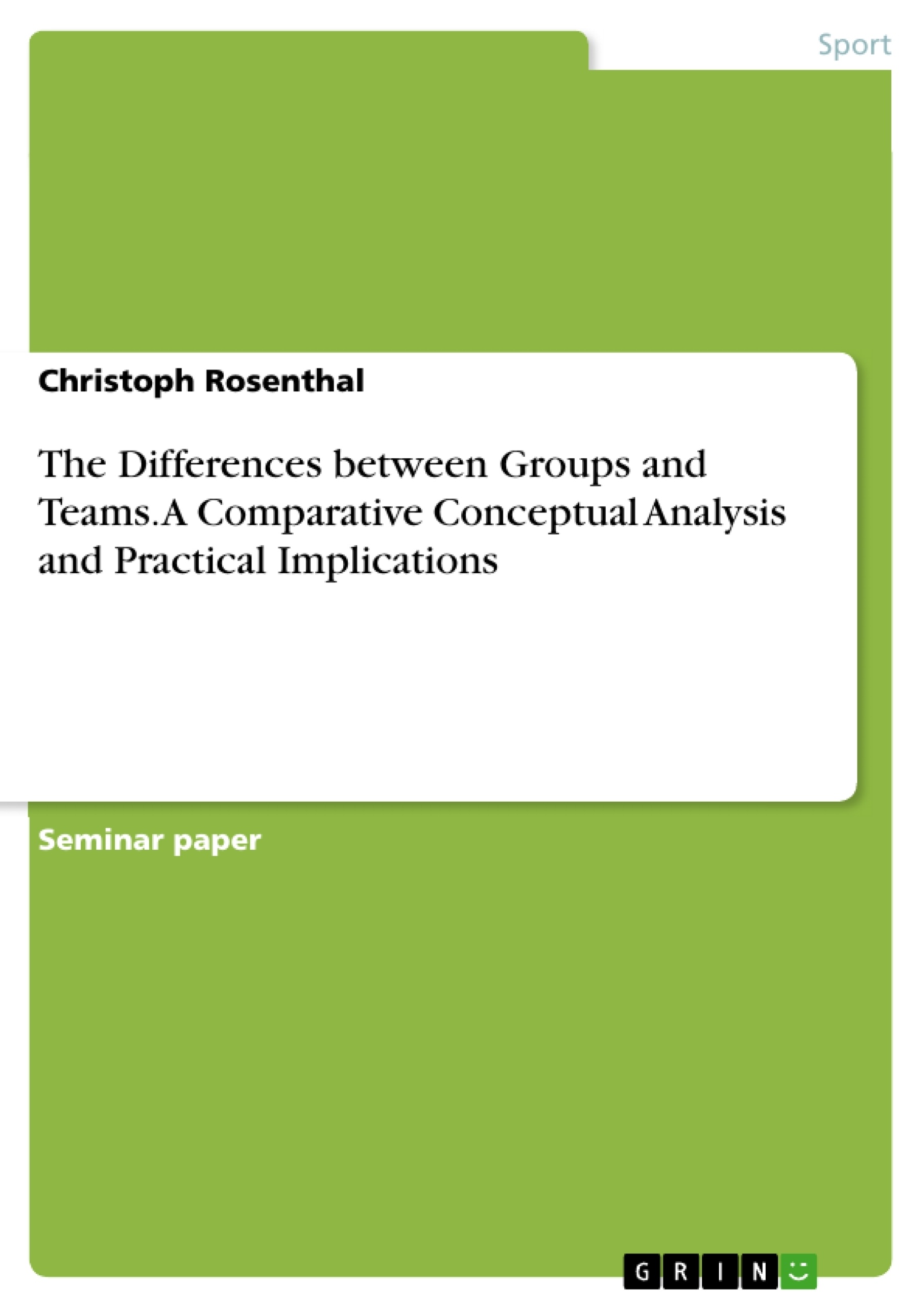Groups are inherent to the existence of human beings. The well-known Aristotelian statement about men being social animals by nature encapsulates the importance of groups in that grouping is a fundamentally social phenomenon. Human beings and their animal ancestors have always been grouping in order to fullfil needs of social bonding, reproduction and to survive. Whereas survival is not their primary purpose anymore, different kinds of groups are still present in contemporary societies.
One variety of groups that has gained increasing attention in organisational and academic realms is the team. The concepts of group and team have unwarily been used as seemingly interchangeable without a clear conceptual differentiation . In the literature on leadership in teams, for example, it has been argued that leaders in teams ought “to do, or get done, whatever is not being adequately handled for group needs”. Likewise, in organisational contexts, it has been claimed that “teams and groups are really just the same thing”.
Tackling the absence of a clear conceptual and practical distinction between the two terms, the essay at hand forges a comprehensive synopsis of the key differences between groups and teams in the broader field around social psychology. It argues that differentiating between these concepts is of crucial importance both in organisational and scholarly contexts mainly because teams function on the micro rather than the macro level. After a brief overview of the dissimilar appearances of groups and teams in the literature, the two terms are related conceptually before a comparative analysis through the concept of leadership illuminates further key differences. Subsequently, a discussion of potential implications for organizational and academic contexts precedes the final conclusion.
Table of Contents
- Introduction
- The Differences between Groups and Teams
- Groups and teams in social psychology
- Leadership in groups and teams
- Implications and Discussion
- Conclusion
Objectives and Key Themes
This essay aims to provide a comprehensive analysis of the key differences between groups and teams within the broader field of social psychology. It argues that distinguishing between these concepts is crucial for both organizational and academic contexts, as teams operate on a micro level rather than a macro level.
- Comparative analysis of groups and teams in social psychology
- The role of leadership in group and team dynamics
- Practical implications of the distinction between groups and teams
- Examination of the different research traditions surrounding groups and teams
- Analysis of how groups and teams function in organizational and social settings
Chapter Summaries
The introduction provides an overview of the concepts of groups and teams and highlights the need for a clear conceptual differentiation. The chapter on "The Differences between Groups and Teams" examines the distinct appearances of groups and teams in the literature, comparing their research traditions and exploring the different contexts in which they occur. It also delves into the conceptual relationship between groups and teams, focusing on the structured, goal-oriented nature of teams as opposed to the broader social connections present in groups. Through the lens of leadership, this chapter further illuminates the key differences between groups and teams, demonstrating how leadership functions in each context. The chapter on "Implications and Discussion" explores the potential implications of the distinction between groups and teams for organizational and academic settings. It examines how understanding these differences can contribute to more effective team dynamics and research.
Keywords
The main keywords and focus topics of this text are: groups, teams, social psychology, leadership, organizational contexts, research traditions, group dynamics, team dynamics, comparative analysis, conceptual differentiation, practical implications.
- Arbeit zitieren
- Christoph Rosenthal (Autor:in), 2014, The Differences between Groups and Teams. A Comparative Conceptual Analysis and Practical Implications, München, GRIN Verlag, https://www.grin.com/document/300995



